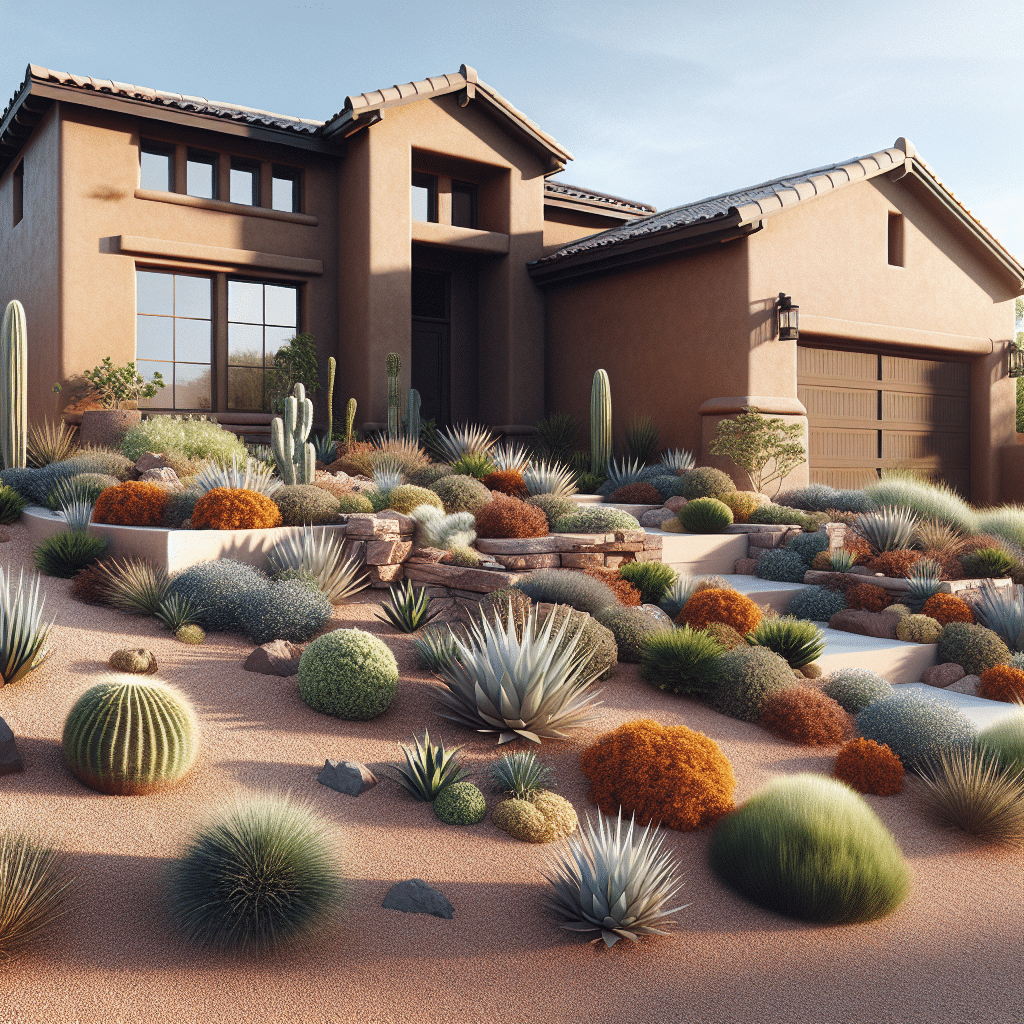Have you been struggling to find plants that thrive in your arid landscape? You’re not alone, and that’s why we’ve created this comprehensive guide just for you. At Red Mountain Landscaping, we’re here to help homeowners in Maricopa County create lush, sustainable gardens with ease.
Contents
- 1 Understanding Xeriscaping
- 2 Why Choose Native Plants?
- 3 Desert Accents to Elevate Your Garden
- 4 Colorful Blooms for a Vibrant Touch
- 5 Hardy Ground Covers for Easier Maintenance
- 6 Edible Xeriscaping Options
- 7 Creating Shade with Trees and Shrubs
- 8 Using Decorative Grasses for Texture
- 9 FAQs: Xeriscaping Essentials
- 10 Tips for Successful Xeriscaping
- 11 Conclusion
Understanding Xeriscaping
Xeriscaping is more than just a landscaping trend; it’s an environmental necessity in many regions. By choosing plants that naturally conserve water, we can create vibrant gardens that require less irrigation and maintenance.
Not only does xeriscaping help conserve precious water resources, but it also reduces our utility bills and supports native biodiversity. Let’s explore how this thoughtful gardening approach can transform your landscape.
Why Choose Native Plants?
Native plants have adapted to the local climate over time, making them ideal candidates for xeriscaping. These plants need less water, fertilizers, and pesticides, saving us both time and effort.
By using native species, we can create gardens that are both beautiful and supportive of local wildlife. Embrace the natural beauty of our region by choosing plants that are truly at home in this environment.
Desert Accents to Elevate Your Garden
Add a touch of elegance with desert accents like agave, yucca, and cacti. These striking plants install a sense of place and intrigue your guests with their unique shapes and textures.
Despite their dramatic appearance, these plants are hardy and require minimal care once established. Use them as focal points or structural elements to enhance your garden’s aesthetic.
Colorful Blooms for a Vibrant Touch
Who says a drought-tolerant garden has to be dull? With flowering plants like lantana, desert marigold, and penstemon, you can enjoy a burst of color throughout the year.
These blooms not only provide visual interest but also attract pollinators, contributing to a healthier ecosystem right in your backyard. Transform your garden into a haven filled with life and color.
Hardy Ground Covers for Easier Maintenance
Incorporating ground covers can make your garden more cohesive and reduce erosion. Consider drought-tolerant varieties like creeping thyme, sedum, and woolly yarrow.
These ground covers create lush carpets of greenery without demanding extensive watering or management. Use them to fill in gaps and knit your landscape together seamlessly.
Edible Xeriscaping Options
Who says you can’t have a productive garden in a xeriscape? Consider plants like rosemary, sage, and prickly pear cactus, which are both edible and drought-resistant.
These plants offer dual benefits by providing a source of fresh ingredients while demanding minimal water. Enjoy the satisfaction of growing your own food right in your xeriscaped garden.
Creating Shade with Trees and Shrubs
Trees and shrubs can make a significant impact by providing much-needed shade and a natural barrier against winds. Opt for species like mesquite and palo verde that are well-suited for arid climates.
These plants offer shade that cools the landscape while reducing water evaporation. Their presence can create microclimates that help other plants thrive and add height and depth to your garden.
Using Decorative Grasses for Texture
Decorative grasses such as blue grama and muhly grass can provide texture and movement to your Landscape Design. Their flowing forms and varied heights catch the light and sway with the wind.
These low-maintenance grasses require little water and can help delineate different areas of your garden. Accent pathways or create visual interest with their graceful stalks.
FAQs: Xeriscaping Essentials
- What is xeriscaping? It’s a landscaping method designed to reduce the need for irrigation by using drought-resistant plants.
- Can I include non-native plants? Yes, but they may require more water and care compared to native species.
- How do I start? Begin by assessing your garden’s soil and sunlight conditions; choose plants that match those needs.
- Is xeriscaping expensive? Initial setup can be costly, but it pays off in water savings and reduced maintenance.
- Will my garden look colorful? Absolutely! Many drought-tolerant plants offer vibrant blooms and foliage.
Tips for Successful Xeriscaping
The key to successful xeriscaping lies in proper planning and plant selection. Evaluate your garden’s microclimates and choose plants that will thrive under those specific conditions.
By grouping plants with similar water and light needs, you can create a cohesive, low-maintenance garden. Remember to mulch generously to retain moisture and reduce evaporation.
Conclusion
Transforming your garden with xeriscaping not only saves water but also enhances the beauty and sustainability of your home. Contact Us at 480-373-9312 or Request a Free Quote to start your journey toward an eco-friendly and stunning landscape today.




